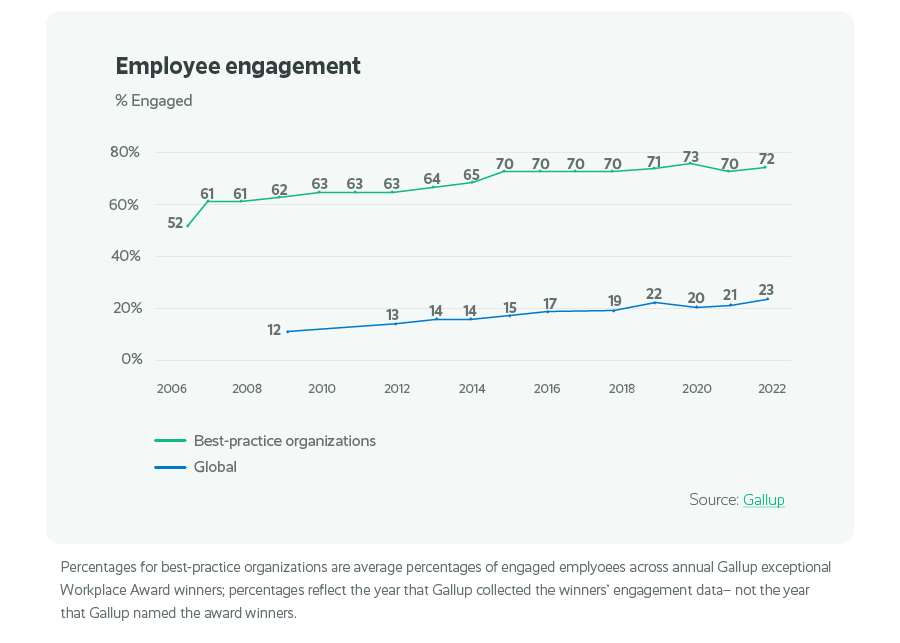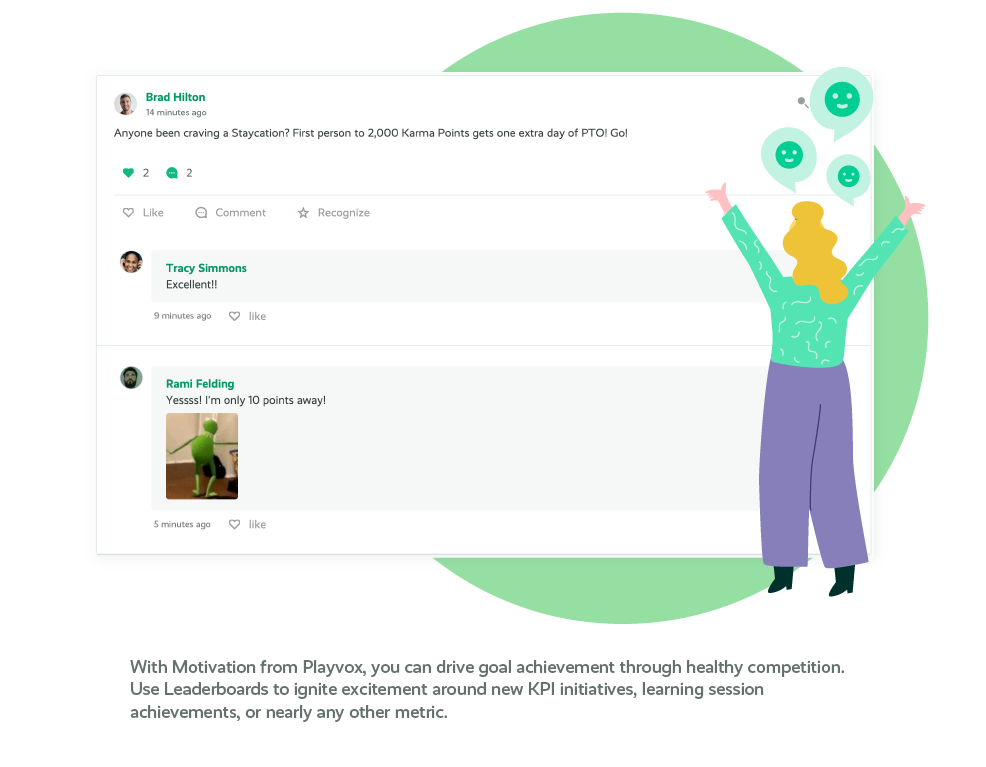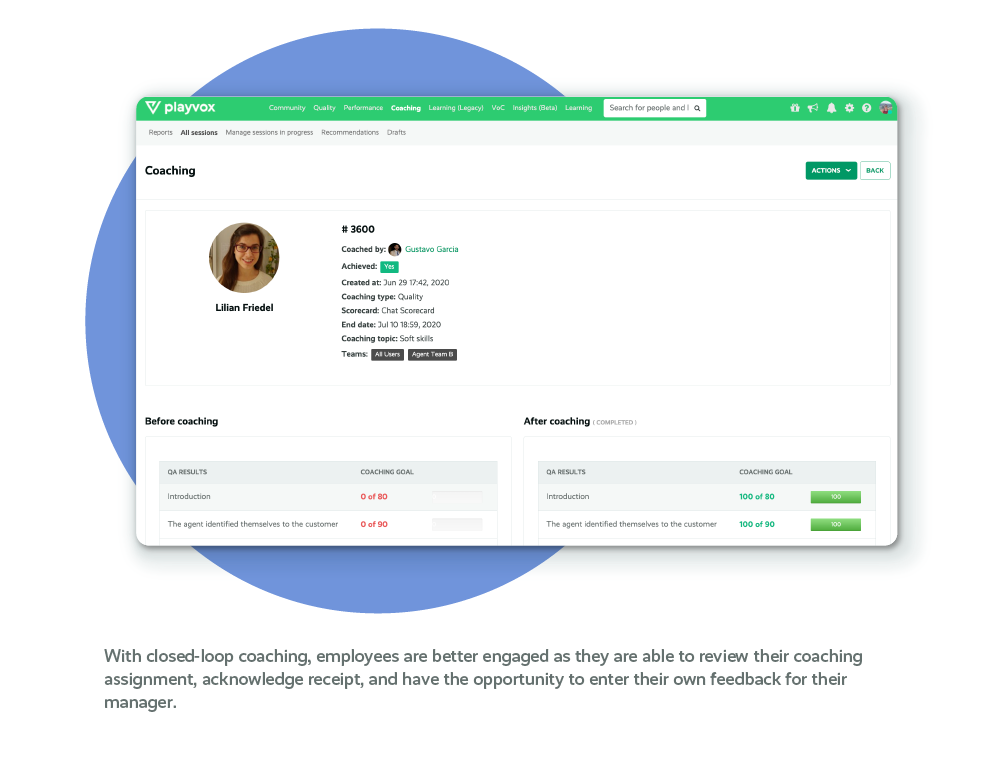The True Cost of Agent Disengagement
There is nothing easy about being a customer service agent in a contact center. In their fast-paced world, every interaction counts. From resolving customer issues to promoting brand loyalty, the success of a support center hinges on the efficiency and effectiveness of its agents. In addition, with the introduction of artificial intelligence (AI), agents are expected to know more than ever before because AI can take over many of the simpler interactions agents once had. In this highly charged environment, there’s a silent but significant factor that often goes unnoticed: agent disengagement.
When agents feel disconnected, unfulfilled, or undervalued, it doesn’t just affect their morale—it can have far-reaching consequences for the entire call center operation. Agent disengagement leads to agents who are less motivated, less productive, and more likely to leave the company. In parallel to the obvious issues with agents themselves, agent disengagement can also cause harm to your company with decreased customer satisfaction and loyalty, lower sales, and fewer opportunities to increase your customer’s share of wallet. In this blog post, we’ll delve into the nuances of agent disengagement, exploring its causes, effects, and the staggering costs it can mean for call centers.
Understanding Agent Disengagement
Agent disengagement isn’t a new phenomenon, but its impact has become more pronounced in today’s hypercompetitive business landscape. Disengaged agents are those who lack motivation, enthusiasm, or a sense of purpose in their roles. They may feel disconnected from the organization’s goals, disenchanted with their work environment, or undervalued by their supervisors. It is also notable that there is a wide difference between those “best practice” organizations and the level of employee engagement as compared to more average companies.

Various factors contribute to agent disengagement:
- Monotonous tasks: Performing repetitive tasks without variation can lead to boredom and disengagement among agents.
- Lack of recognition: When agents feel that their efforts go unnoticed or unappreciated, they’re less likely to feel motivated to excel.
- Inadequate training: Insufficient training or a lack of opportunities for skill development can leave agents feeling ill-equipped to handle their responsibilities.
- Poor leadership: A toxic work culture, ineffective management practices, or unsupportive leadership can demotivate agents and foster disengagement.
- Inflexible working hours: While no one would wish for the shutdown that we saw across the globe as a result of the pandemic, it forced companies to get creative and allow employees to work from home or other flexible locations. Now employers who don’t offer agents location flexibility can detrimentally impact agent satisfaction since many employees became accustomed to having some choice in the way and the place where they work in the past couple of years.
The Ripple Effects of Agent Disengagement
The consequences of agent disengagement extend far beyond individual dissatisfaction. They permeate through every aspect of contact center operations, impacting performance, customer satisfaction, and ultimately, the bottom line.
- Decreased productivity: Disengaged agents are less likely to put forth their best effort, resulting in decreased productivity levels. They may take longer to handle customer inquiries, leading to extensive wait times, and lower service levels. Employees who are not engaged or who are actively disengaged cost the world $8.8 trillion in lost productivity, according to Gallup’s State of the Global Workplace: 2023 Report.
- Higher turnover rates: Disengaged agents are more likely to seek opportunities elsewhere, leading to higher turnover rates within the call center. This constant churn disrupts operations, increases recruitment costs, and places additional strain on the remaining staff.

- Reduced customer satisfaction: Disengaged agents are unlikely to provide the level of service that customers expect. This can result in poor customer experiences, leading to dissatisfaction, churn, and damage to the company’s reputation.
- Escalated error rates: Disengaged agents are prone to making mistakes or overlooking important details, which can result in errors in customer interactions. These errors not only impact customer satisfaction but may also necessitate costly remediation efforts.
Quantifying the Cost of Agent Disengagement
While the consequences of agent disengagement are clear, quantifying its financial impact can be more challenging. However, numerous studies have attempted to estimate the cost of disengagement within contact centers:
1. Lost Revenue
As noted earlier in this article, actively disengaged employees cost the U.S. economy up to $8.8 trillion annually in lost productivity. For call centers, this translates to missed revenue opportunities, as disengaged agents fail to convert leads or upsell existing customers.
2. Recruitment and Training Costs
The cost of recruiting and training new agents to replace those who leave due to disengagement can be substantial. This includes expenses related to advertising, interviewing, onboarding, and ongoing training initiatives. According to the Center for American Progress, it can cost an average of $15,000 to $25,000 to replace a single employee, depending on their level of seniority. For businesses with high turnover rates due to agent disengagement, these costs can add up quickly. More significantly, in addition to the hard costs related to bringing on new employees, there are the “soft” costs of lowered team morale and decreased employee satisfaction for those agents who do stay while others leave.
3. Customer Churn
Disengaged agents contribute to higher levels of customer churn, as dissatisfied customers seek alternatives. I’m sure you can think of a time when you experienced a less-than-stellar customer experience that then resulted in you taking your business elsewhere. According to a study by PwC, 32% of customers would stop doing business with a brand they loved after just one bad experience. This can have serious consequences for businesses in terms of revenue and reputation. The cost of acquiring new customers to replace those lost due to poor service can be significant, impacting the call center’s and the company’s profitability. According to Forbes, it can cost four to five times more to acquire new customers versus retaining current ones.
4. Lost Opportunity Cost
As noted, it is significantly more expensive to find a new customer than to keep an existing one. In addition to the impact of customer churn, there is the added impact of being unable to cross-sell or up-sell to long-time customers. Studies show that existing customers are 50% more likely to try new products and spend 31% more than new customers.
5. Quality Management Efforts
To mitigate the impact of disengaged agents on service quality, call centers may need to invest in additional quality management measures. This includes monitoring and evaluating interactions, providing feedback and coaching, and implementing process improvements—all of which require time and resources. While you can automate much of this through the use of AI-driven solutions like AutoQA, you still need to have dedicated teams engaged to monitor and address any issues that may turn up as the result of the quality management process.
Addressing Agent Disengagement
Given the substantial costs associated with agent disengagement, contact centers must prioritize strategies to foster a culture of engagement and empowerment among their workforce. Here are some actionable steps that contact center managers can take:
1. Provide Meaningful Recognition
Acknowledge and celebrate the achievements of agents, whether it’s meeting performance targets, delivering exceptional service, or demonstrating innovation. Regular recognition fosters a sense of pride and motivation among agents. At Playvox, we’ve seen our customers enjoy success by leveraging gamification to recognize agent performance.

2. Offer Ongoing Training and Development
Invest in continuous learning opportunities to help agents expand their skills, stay updated on industry trends, and advance their careers within the organization. Empowered agents are more likely to feel engaged and committed to their roles. To provide mentoring to your agents, you can leverage a wide array of coaching solutions such as the example below.

3. Foster a Positive Work Environment
Cultivate a supportive and inclusive work environment where agents feel valued, respected, and heard. Encourage open communication, address concerns promptly, and promote work-life balance to prevent burnout.
4. Empower Agents with Technology
Equip agents with the tools and technology they need to streamline their workflows, access relevant information quickly, and deliver personalized service to customers. Modernizing the call center infrastructure can enhance efficiency and job satisfaction.
5. Provide Options for Where Agents Work
Despite many companies continuing to push for employees to return to an office, also known as RTO, team members very much want the flexibility to work from anywhere. Many contact center agents also want to be able to balance family obligations with work. To enable flex schedules and meet agreed-upon service levels (SLAs), look at implementing a workforce management solution to better forecast, schedule, and manage your call center operations.
Turn Around Agent Disengagement and Reap the Rewards
Agent disengagement poses a significant threat to the success and sustainability of contact centers. Beyond its immediate impact on employee morale, disengagement manifests in decreased productivity, higher turnover rates, and diminished customer satisfaction—all of which come at a considerable cost to operations. By prioritizing strategies to address agent disengagement and cultivate a culture of engagement and empowerment, support centers can mitigate these costs and unlock the full potential of their workforce. In doing so, you can enhance operational efficiency and strengthen your company’s competitive advantage in an increasingly demanding marketplace.
Looking for ways to motivate and recognize your agents and fight off agent disengagement? Check out this article for tips on motivating and empowering your agents.





